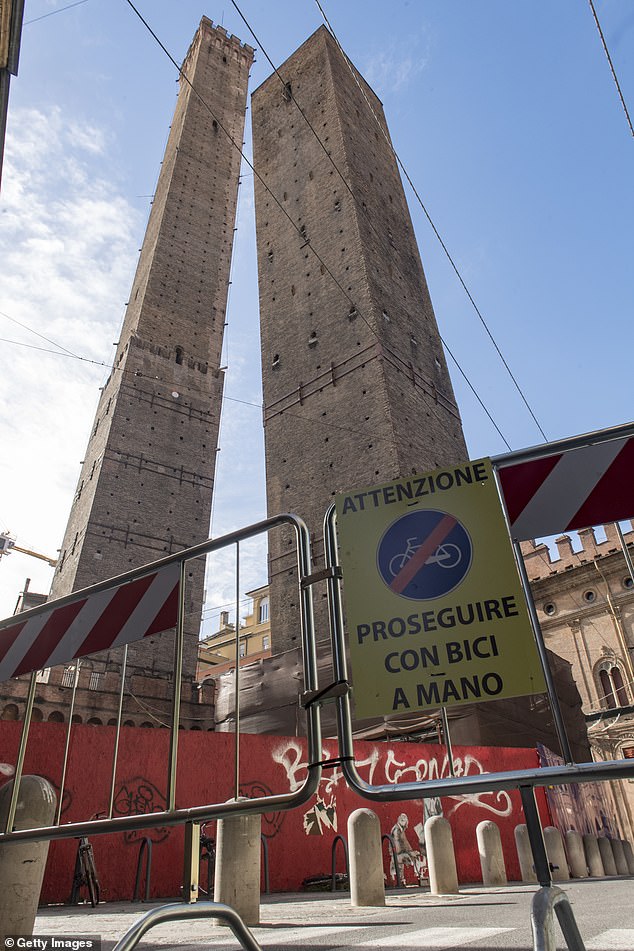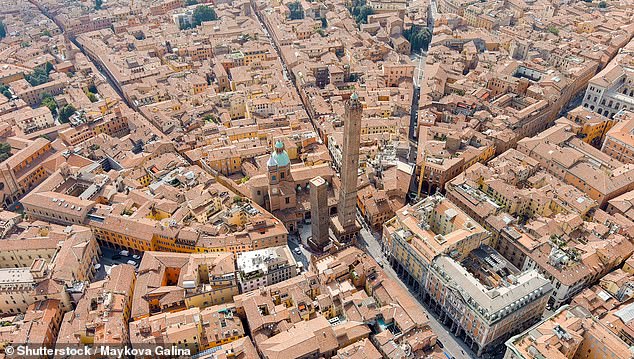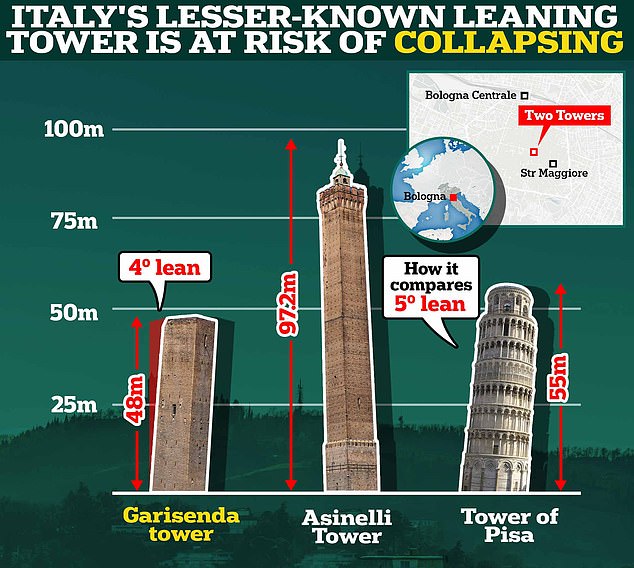The leaning tower of Bologna is sealed off over fears it is about to COLLAPSE: Officials set up exclusion zone around 154ft medieval structure in ‘highly critical’ condition
- The city council has closed the 45-meter-high tower for fear that it could soon collapse
- In October, experts warned that the foundations may be eroding
A leaning medieval tower in northern Italy has been sealed off amid fears it will soon collapse.
Authorities have started building a 4.5-meter-high barrier around the Garisenda Tower to contain debris after the city council said the situation was “very critical.”
The 45-metre-high tower, built 900 years ago, is usually tilted at a four-degree angle, but constant monitoring by the University of Bologna has revealed recent shifts in the way it leans.
In October, experts warned that the tower's weak foundations may be settling, requiring an injection of fill material to provide greater stability.
And the city's tourism office said they had detected abnormal noise, vibrations, vibrations and movements of several millimeters in the tower.

The Garisenda Tower from Via San Vitale, which will be closed to traffic on November 6, 2023

The old town of Bologna with the two towers depicted centrally, including the Garisenda Tower
The Garisenda Tower site was sealed off two months ago after sensors first noticed changes in tilt.
Inspections of the site subsequently revealed that some of the material foundations were eroding away after nine centuries.
The Garisenda Tower and the Asinelli Tower next to it were built between 1109 and 1119, a few decades before the then city's rapid expansion into one of the most important commercial centers of northern Italy.
The iconic towers are barely younger than the University of Bologna itself, an institution that dates back to 1088 and is famous for being the oldest continuously operating university in the world.
The Asinelli Tower has no ramp and is still open to the public for visitors to climb. But Bologna's tourist office says the loss of the smaller building would be a devastating loss for the city's rich history.
“Given the cultural relevance of the Garisenda Tower, its hypothetical loss would be tragic, not only in terms of tourism, but also for the history of Bologna and Italy,” a spokesperson said.
In October, the spokesperson said that the signals detected so far did not lead to the tower collapsing.
Lucia Borgonzoni, Italy's Deputy Minister of Culture, also announced that the government would finance the work to strengthen the tower with around €5 million from Italy's EU National Recovery Fund.


The two towers – Asinelli and Garisenda – in Bologna in an undated file image
Like most of Bologna's medieval towers, the Garisenda Tower was built on a ring-shaped base of mortar terracotta bricks and river stones.
It is this base material that is likely the cause of the tower's drastic inclination as the foundation sinks into Bologna's soft soil.
Even by the 14th century it had begun to lean and was scaled back to avoid collapse.
At 48 meters high, it is only slightly shorter than the medieval Romanesque Leaning Tower of Pisa, while also having an extra degree of slope.
Despite the structural problems, experts say the structure in Pisa could remain stable for another 200 years.
